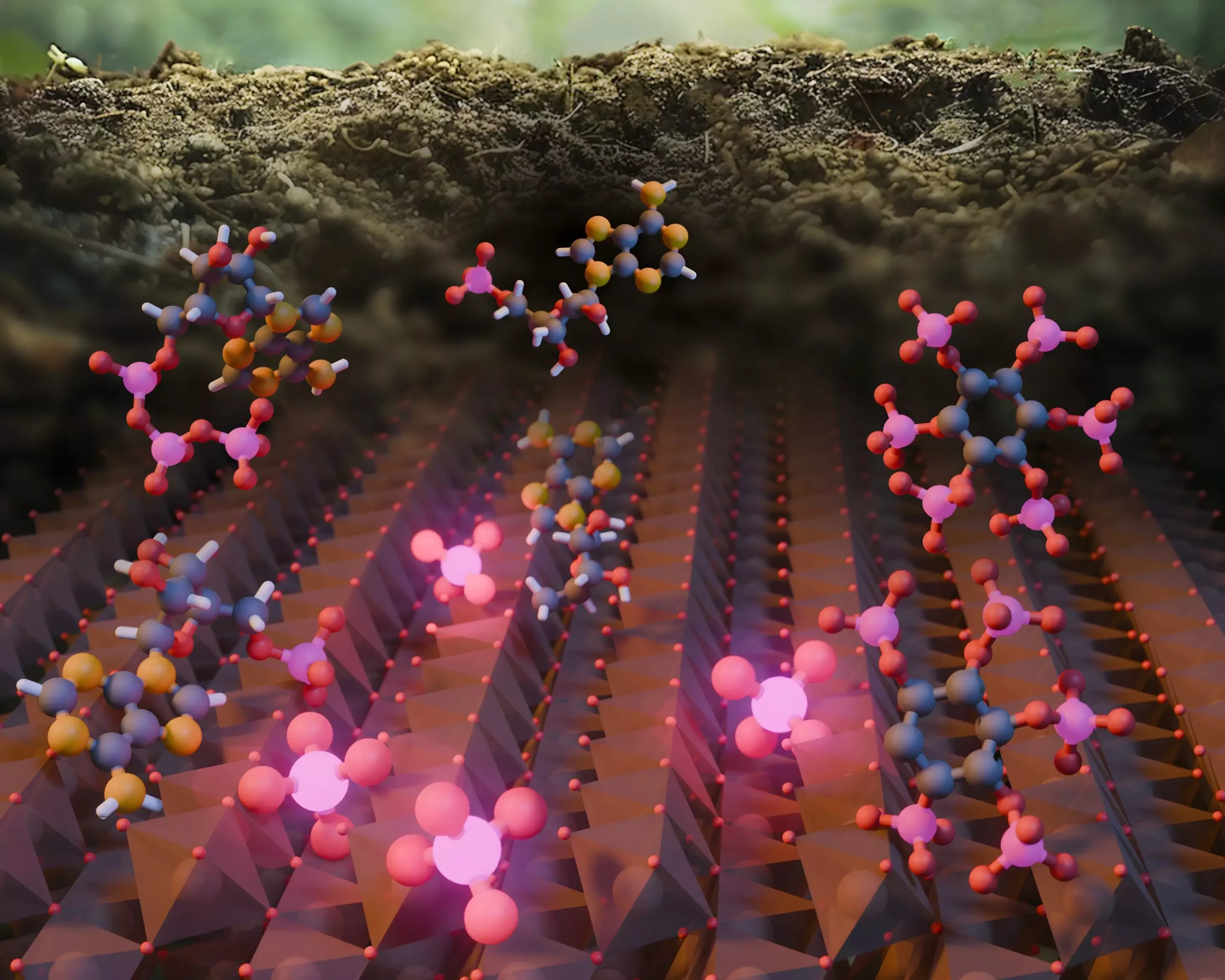

Phosphorus is an essential nutrient that plays a pivotal role in plant development and agricultural productivity. It is a key ingredient in fertilizers that farmers rely on to enhance crop yield and ensure food security on a global scale. The ongoing challenge of maintaining a consistent supply of phosphorus is compounded by the fact that it is a finite resource, primarily sourced from mining operations. As the world grapples with the reality of depleting phosphorus reserves, understanding the natural cycling of this nutrient becomes increasingly crucial for sustainable agriculture and environmental integrity.
Researchers from Northwestern University have just unveiled groundbreaking findings that could redefine our understanding of the phosphorus cycle. They have identified a previously overlooked mechanism that enables the transformation of organic phosphorus into inorganic forms. This transformation is vital for the availability of phosphorus to plants, effectively bridging a gap in the existing knowledge of how nature manages this important nutrient.
Traditionally, the phosphorus cycle has been understood as a biological process reliant primarily on enzymes produced by plants and microorganisms. These enzymes work to cleave organic phosphorus—often bound to carbon in complex organic structures—into inorganic forms that plants can readily absorb. While this enzymatic process has long been a focal point in phosphorus cycling research, the Northwestern study challenges this understanding by introducing the role of iron oxide minerals as active participants in phosphorus recycling.
In their research, the team led by Ludmilla Aristilde discovered that iron oxide minerals, ubiquitous in soils and sediments, can catalyze the conversion of organic phosphorus to its inorganic counterpart. This revelation is not simply an academic curiosity; it has significant implications for farming practices and global food security. With estimates suggesting that we might run out of easily accessible phosphorus within a few decades, the necessity for alternative sources and methods of recycling becomes glaringly evident.
The implications of this research extend beyond surface-level understanding. Given that iron oxide minerals can recycle phosphorus at rates comparable to biological enzymes, this finding calls for a re-evaluation of current practices in agriculture and nutrient management. If we can harness the natural processes that utilize these minerals, we can potentially decrease our dependence on chemical fertilizers, reduce environmental degradation, and promote sustainable agricultural practices.
Aristilde’s team conducted meticulous laboratory experiments that showed iron oxides not only facilitate the breakdown of organic phosphorus but also trap it, indicating a dual role in the phosphorus cycling process. The findings underscore the importance of considering geological and mineralogical aspects in the study of nutrient cycling, an area that has been largely overshadowed by biological factors until now.
One of the most fascinating implications of this research goes beyond Earth. Aristilde notes that Mars, known for its reddish hue, is abundant in iron oxides. The parallels between phosphorus cycling on Earth and the potential for similar processes on Mars could provide vital insights into extraterrestrial ecosystems. Understanding how nutrient cycling occurs in different planetary environments opens up new avenues for exploring the possibility of life beyond our planet.
The crossover between terrestrial and extraterrestrial studies emphasizes the remarkable interconnectedness of scientific disciplines. This research not only enriches our understanding of Earth’s systems but also provides a framework for recognizing similar processes that could exist elsewhere in the universe.
Given the critical nature of phosphorus in food production and environmental health, these findings present a call to action for further research into nutrient recycling mechanisms. The identification of iron oxides as key players in the phosphorus cycle represents just the tip of the iceberg. Future studies should investigate the broader implications of this mineral-catalyzed transformation, including its potential applications in agricultural practices and ecosystems management.
Aristilde’s exhortation to explore “nature-based solutions for phosphorus recycling” reflects a growing trend in sustainability-oriented research. As we look ahead, merging traditional agricultural practices with innovative, nature-inspired methods could pave the way for a more secure and sustainable food future. Through an interdisciplinary approach that integrates geological, biological, and ecological insights, we can redefine our nutrient management strategies, making them more resilient in the face of impending resource constraints.
In essence, the Northern University study not only illuminates a critical mechanism in managing one of agriculture’s most essential nutrients but also serves as a reminder of the complex interplay within our ecosystems, urging us to take heed of the wisdom that nature has to offer.
Radionuclides, often relegated to discussions surrounding nuclear energy and radioactive waste, have far-ranging implications for…
Landslides have long been a concern in areas like California, where the unique geography and…
In the vastness of our galaxy, among countless stars, lies a fascinating phenomenon known as…
This week marks a monumental milestone in astronomy as the Hubble Space Telescope celebrates its…
The enigma of dark matter has captivated the scientific community for decades. Although it constitutes…
As individuals age, the likelihood of encountering age-related macular degeneration (AMD) significantly increases, posing a…
This website uses cookies.